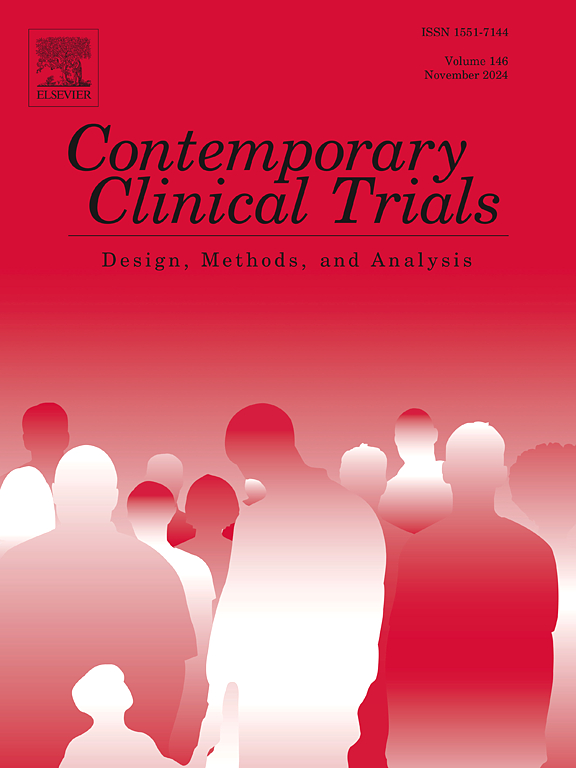Developing a cost-effective and efficient safety case management solution for data coordinating center projects
IF 2
3区 医学
Q3 MEDICINE, RESEARCH & EXPERIMENTAL
引用次数: 0
Abstract
A centralized safety function can support multiple clinical trials and provide efficient, standardized processes for the management of serious adverse events. From 2017 to 2022, the centralized safety desk used pharmacovigilance software compliant with FDA regulations, including 21 CFR Part 11. This software assisted with processing safety cases for regulated clinical trials, including allowing capture of event data, and provided process flow management, documentation storage, and transmission of safety reports to FDA. During the software's tenure, we experienced incompatibilities with other clinical research software resulting in unanticipated inefficiencies. Furthermore, the small number of periodic and suspected unexpected serious adverse reaction (SUSAR) cases rendered the annual license fee not cost-effective. An internal analysis of our workflow, systems, and processes revealed that developing a cost-effective and efficient customized solution for our existing data coordinating center (DCC) projects was feasible. The customized solution mimics the key functionality and workflow of the prior software. It utilizes existing electronic data capture systems and document management solutions, ensuring 21 CFR Part 11 compliance without incurring additional expenses. The proposed process received internal approval and launched in December 2022. The process outlined in this paper is particularly advantageous for DCCs or academic clinical research sites that must meet regulatory reporting requirements without depending on specialized pharmacovigilance software. Additionally, it is a cost-effective option for organizations with a low volume of SUSAR events. In this paper, we present the process of developing and implementing a customized safety case management solution and the lessons learned pre and post implementation.
为数据协调中心项目开发经济高效的安全案例管理解决方案。
集中的安全功能可以支持多个临床试验,并为严重不良事件的管理提供高效、标准化的流程。从2017年到2022年,集中安全工作台使用符合FDA法规的药物警戒软件,包括21 CFR第11部分。该软件协助处理受监管的临床试验的安全案例,包括允许捕获事件数据,并提供流程管理,文档存储和向FDA传输安全报告。在该软件的使用期间,我们经历了与其他临床研究软件的不兼容,导致了意想不到的低效率。此外,少量的周期性和疑似意外严重不良反应(SUSAR)病例使得年度许可费不具有成本效益。对我们的工作流程、系统和流程的内部分析表明,为我们现有的数据协调中心(DCC)项目开发一种经济高效的定制解决方案是可行的。定制的解决方案模仿了先前软件的关键功能和工作流程。它利用现有的电子数据捕获系统和文档管理解决方案,在不产生额外费用的情况下确保21 CFR Part 11的合规性。拟议的流程获得了内部批准,并于2022年12月启动。本文概述的过程对于必须满足监管报告要求而不依赖专门的药物警戒软件的dcc或学术临床研究场所特别有利。此外,对于SUSAR活动数量较少的组织来说,这是一个具有成本效益的选择。在本文中,我们介绍了开发和实施定制安全案例管理解决方案的过程以及实施前后的经验教训。
本文章由计算机程序翻译,如有差异,请以英文原文为准。
求助全文
约1分钟内获得全文
求助全文
来源期刊
CiteScore
3.70
自引率
4.50%
发文量
281
审稿时长
44 days
期刊介绍:
Contemporary Clinical Trials is an international peer reviewed journal that publishes manuscripts pertaining to all aspects of clinical trials, including, but not limited to, design, conduct, analysis, regulation and ethics. Manuscripts submitted should appeal to a readership drawn from disciplines including medicine, biostatistics, epidemiology, computer science, management science, behavioural science, pharmaceutical science, and bioethics. Full-length papers and short communications not exceeding 1,500 words, as well as systemic reviews of clinical trials and methodologies will be published. Perspectives/commentaries on current issues and the impact of clinical trials on the practice of medicine and health policy are also welcome.

 求助内容:
求助内容: 应助结果提醒方式:
应助结果提醒方式:


